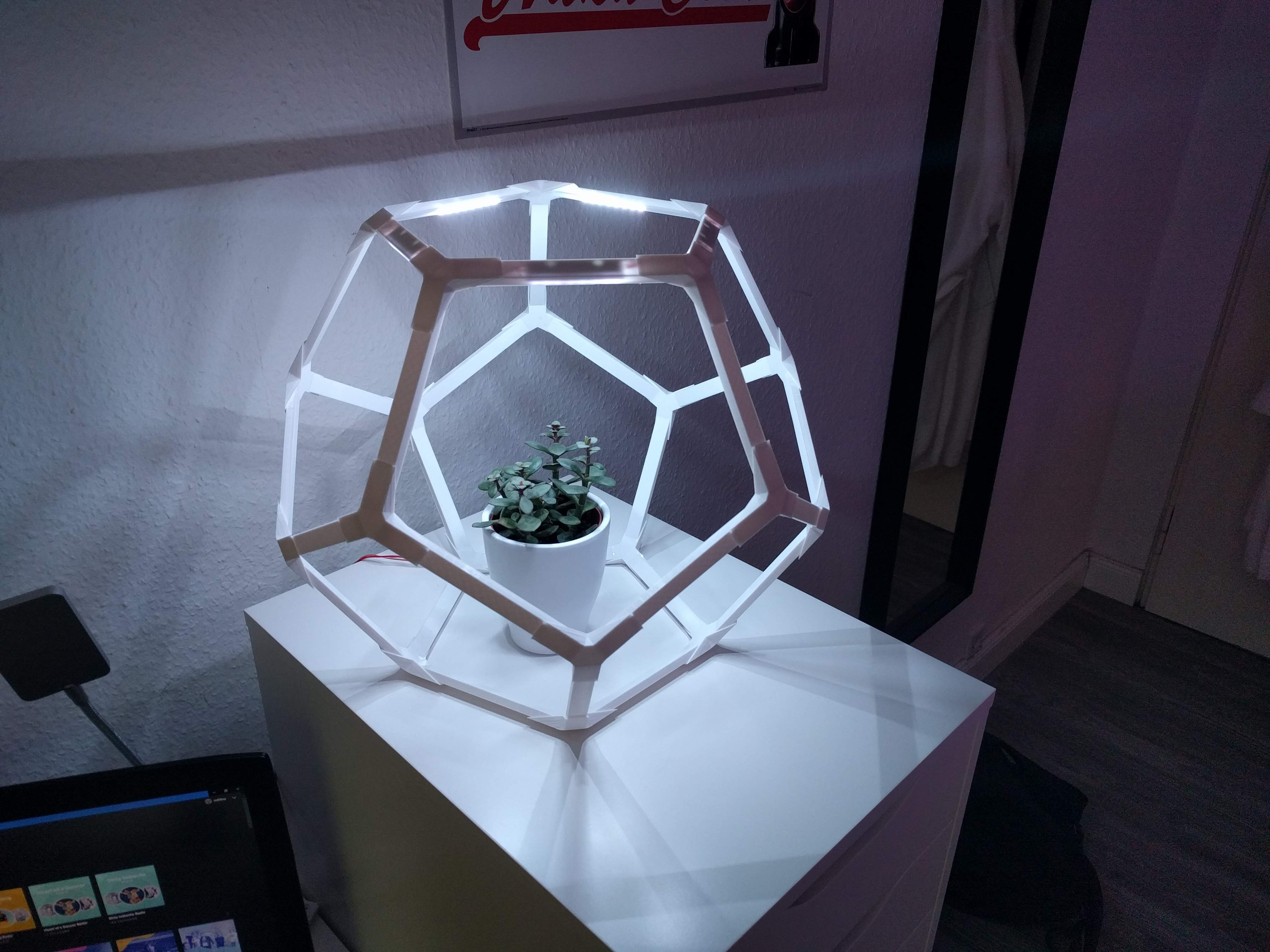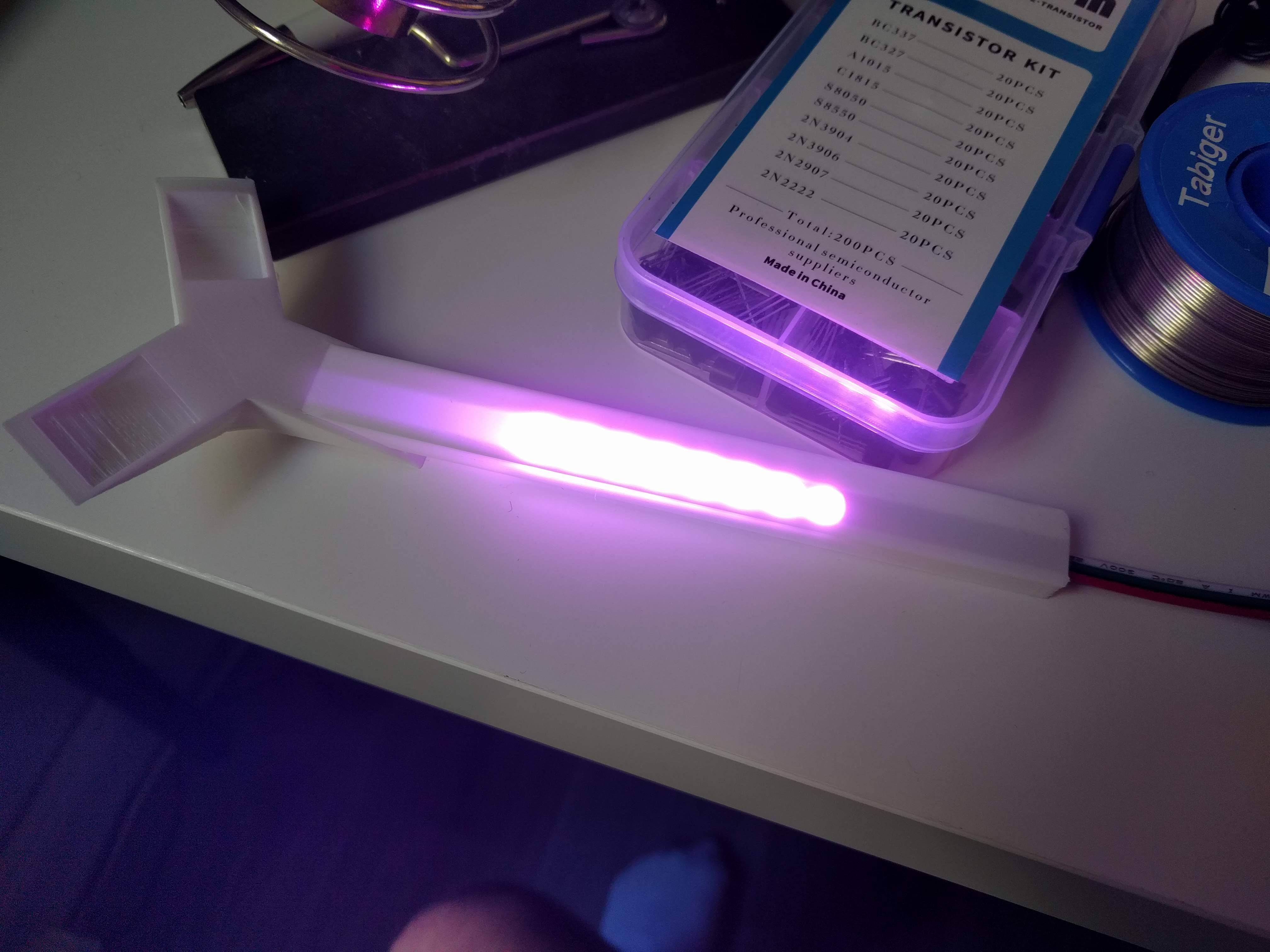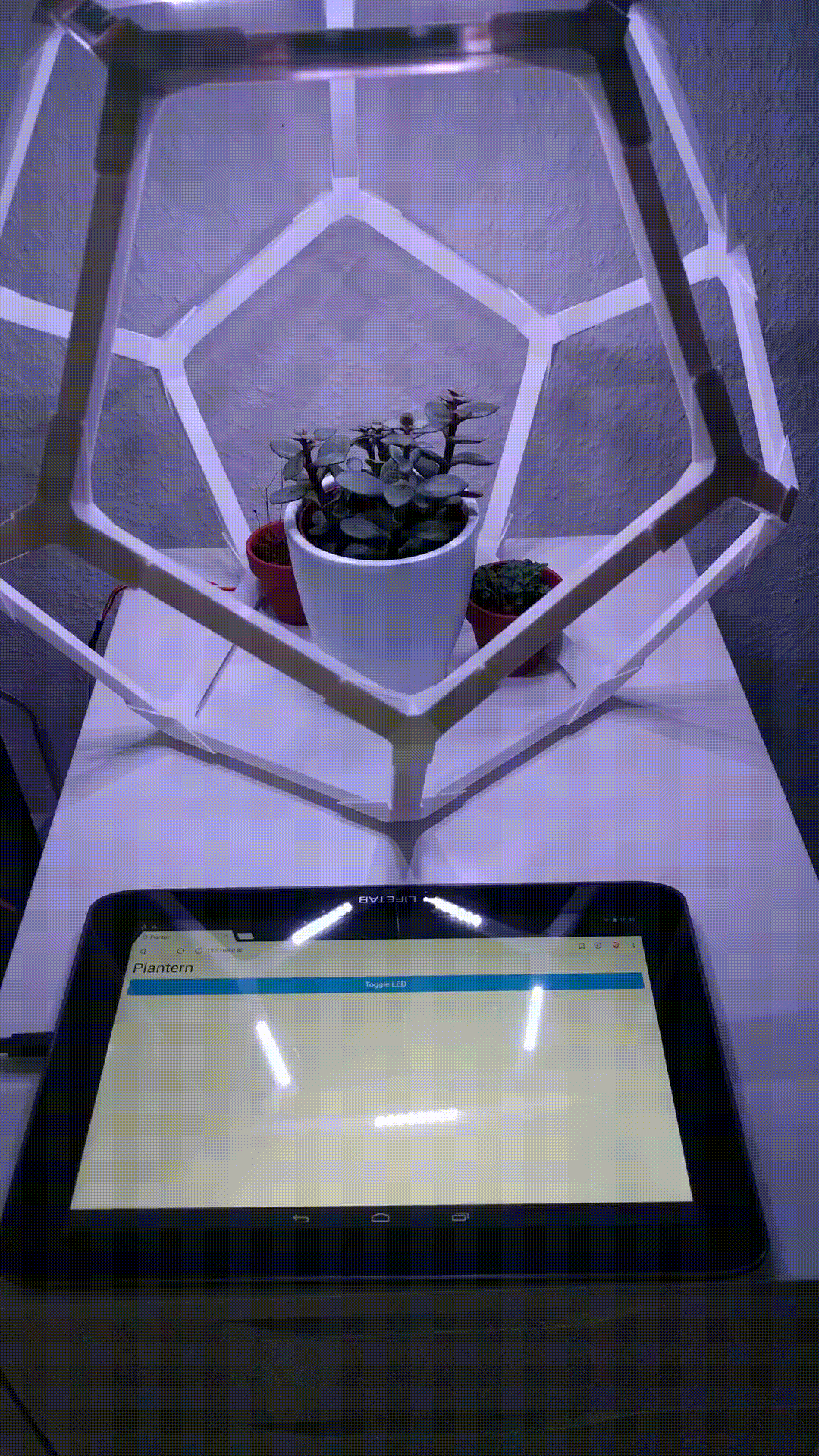Plant Lamp
In this project, I built a lamp, because my plants were not getting enough light in my dark room (I have moved since). This is the final Result of the project.

I saw some nice plant pots online that used a dodecahedron shape, this inspired me to use the shape for the lamp. But first, I needed to figure out, where the lights would go. I got some PCBs with WS2812 LEDs on them and tested how I could integrate them. I settled on printing hollow bars, where the PCBs could slot in. The wiring could also be completely hidden this way. By printing just a very thin layer, the LED could shine through, when turned on, but were hidden from view, when the lamp was turned off.
Here you can see an example of the LEDs mounted inside one of the bars. 
The parts I modeled, could be slotted together to form the dodecahedron. Notice, how the wire runs completely within hollow bars of the structure. There are three different kinds of bars used in this project. One is hollow, for the wire to pass through, one is partially seethrough, so the LEDs can shine through it and the rest of the bars can be made solid. The wires can be routed through the connectors.


Changing to D1 mini with web server
I switched from the old controller of my effects lamp to a new controller. For this, I used a D1 mini board with an ESP8266, which I could run a small webserver on. I made a breadboard hat for the D1 to go from the 3.3V, that the ESP8266 operates on to the 5V, that my individually addressable WS2812 LEDs needed on the data pin.

Having a wifi-capable SOC served two purposes:
- Controlling the lamp via wifi, by running a web server on the D1 mini.
- Getting the time via NTP, so that I could set the lamp on a timer, so my plants get enough light without me having to remember turning on the lamp.
Here you can see me turning the lamp on and off via the proof of concept website hosted on the D1 mini. 
I have since modeled a version with less visible seams, but because my new apartement is bright enough for my plants to thrive without it, I’ve never gotten around to printing it.